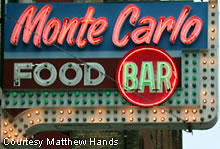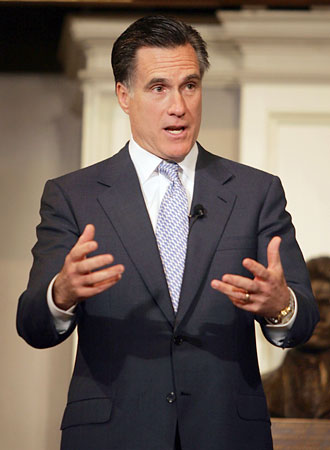The Eats Sheet: A Dallas Doubleheader
Long overdue, the Eats Sheet catches up to my several-weeks-in-the-past trip to Dallas, where I visited my aging grandmother. Today we look at two Dallas eateries: Calle Doce, and the Churrascaria chain, Fogo de Chao.
Calle Doce looked promising. This close to the border I suspected that we would be more likely to get some real comida Mexicana auténtica. What appeared to be an all Mexican wait staff and a menu filled with such favorites as siete mares and tacos al carbón reinforced my suspicions. A wandering guitar minstrel ambled around the tables taking requests. He even did a nice bachata rendition of Stairway to Heaven. Before we had time to peruse the menu and make our selections I ordered us a round of tostadas de ceviche.  The tostadas did not disappoint even my high expectations. Instead of the usual tiny cubes of cod or whitefish, these were a nice red ahi tuna cut in thick three-quarter inch cubes, marinated in lime, dusted with spice, piled on a tostada and loaded with diced tomatoes and onions and sliced avocados. With a final squirt of tapatío and lime, they were perfect.
The tostadas did not disappoint even my high expectations. Instead of the usual tiny cubes of cod or whitefish, these were a nice red ahi tuna cut in thick three-quarter inch cubes, marinated in lime, dusted with spice, piled on a tostada and loaded with diced tomatoes and onions and sliced avocados. With a final squirt of tapatío and lime, they were perfect.
The rest of lunch, however, took a different turn. I had the fish tacos, and I may have been asking for alchemy to expect good seafood in the middle of the desert. On the other hand, the ceviche was fresh, so perhaps my hope for good fish was not so unfounded. At any rate, my hopes, founded or not, were dashed on the jagged shards of a hard and dried-out piece of mahi-mahi. The rest of the contents of the tacos were fine, but the foundation was wanting. To make matters worse, the rice, cooked with corn kernels, was greasy—not buttery, greasy; and was a sickly looking grey hue. The refried beans either came from a can or were made by a chef who for some unfathomable reason has mastered the technique of re-creating metallic savorlessness.
Maybe it was just a bad day, but the non-ceviche food at Calle Doce was not worth the $10-$15 per plate. With the porch-dining and the guitarrista, I give it high points for style, and for ceviche, but low for food. I still recommend Calle Doce, for the ceviche, but don’t bother on the rest.
Fogo de Chao just opened a Minneapolis Restaurant a month ago, and the place has been rockingly busy (which is appropriate, I guess, since they’re near neighbors with Hard Rock Café). Lines out the door at almost any time of day make it clear that Minneapolitans have quite a taste for carnivorous debauchery. I could declare in self-righteousness that I look with disapprobation at such wanton flesh-consumption, but it would be a thin mask for the fact that I simply can’t afford the $44.50 ($29.50 if you go for lunch) to eat at Fogo.
In
 Churrascaria that I can’t remember), and against this background, Fogo, despite some high points, is middling.
Churrascaria that I can’t remember), and against this background, Fogo, despite some high points, is middling. Appropriately for an eatery of its manner, Fogo’s strongest point is its meat. Here I did not just get quantity (though that was abundant), I got quality cuts of meat. The filet mignon was especially good. If anything, a few pieces were a bit too rare. At one point I looked across the table to see my grandma working on a piece of cow-flesh so red I wasn’t sure it was dead. But too rare is better than too burnt.
The rest of Fogo, while good, did not live up to the meat. The fried polenta sticks were buried in cheap salty parmasean crumbs (as opposed to dusted with buttery shredded parmasean), and the fried bananas sat in a mushy pool of canola oil. I should add that neither of these facts stopped me from eating plenty of both. They were still good, despite a few drawbacks. The salad bar was surprisingly slim. Rice and beans were conspicuously absent. Maybe they were just trying to live up to the “everything’s bigger in Texas” mantra that’s chanted mindlessly by a thousand would-be cowboys, but I was shocked to see asparagus the diameter of glue sticks and palm hearts that wouldn’t fit inside a toilet paper tube. Both were decidedly un-tender and fibrously stringy—it was reminiscent of eating the wrong part of an artichoke.
Now, if you are going to a Churrascaria, it is true that you aren’t going to eat plate after plate of asparagus and fried polenta. The meat is the res and the rest is the rest. But even so, good meat should be in good company. Fogo’s meat is too good for the company it keeps, especially at the price. I recommend it with hesitation.
















